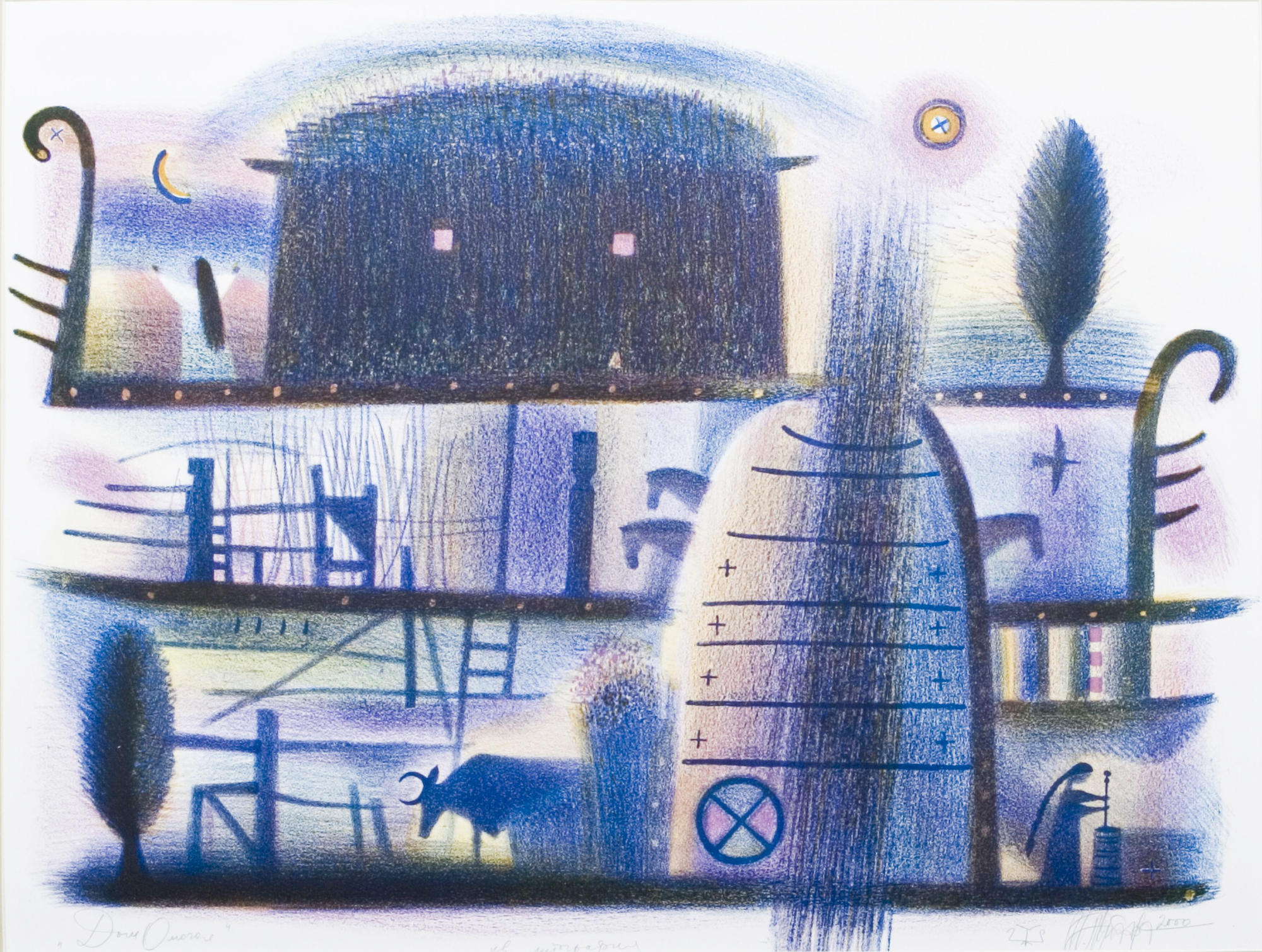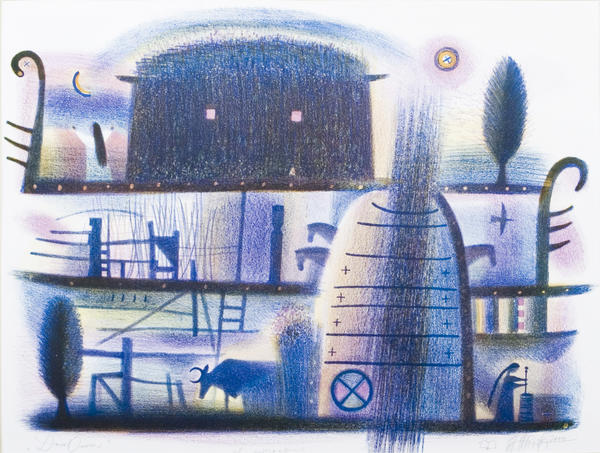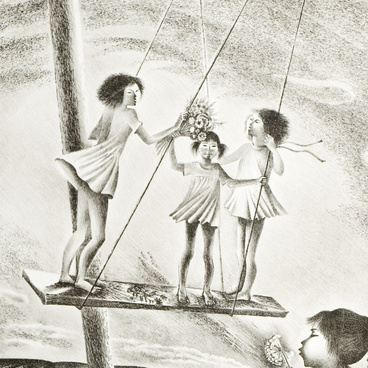In 2000, Tuyaara Shaposhnikova created a series of lithographs based on “Elleyada”, a collection of oral historical legends about the origin of the Yakuts. The series includes the lithograph Omogoj’s Home, which is held in the collection of the National Fine Arts Museum of the Republic of Sakha (Yakutia).
The lithograph is based on the legend about Omogoj Baj. The man had two daughters who both fell in love with a handsome youth called Ellej. According to legend, Ellej married Baj’s unloved ugly daughter. The father got angry and turned the newlyweds out of the house.
The lithograph can be divided in three parts. The upper part depicts a balagan, a Yakut winter house. To the left of the house which resembles a dark and gloomy mountain, the painter depicts Omogoj’s beloved daughter, her hands desperately raised to the sky.
The middle part represents basic symbols of Yakut culture: a sergeh, a ritual pillar for tethering a horse, a fence rail and three horses. In the lower part, Shaposhnikova depicted Urasa — the summer home of the Yakuts. The vertical strokes in the center of the picture are smoke that erupts upward from the house and combines the three parts of the composition with each other. In the lower part, Shaposhnikova depicted Urasa — the summer home of the Yakuts. The vertical strokes in the center of the picture are smoke that erupts upward from the house and combines the three parts of the composition with each other.
In the lower part of the lithograph next to the image of the urasa looms silhouette of a cow. According to legend, Omogoy drove his son-in-law with his unloved daughter to the outskirts of the earth, giving a dowry consisting of one inferior cow. Illustrative image of a horned cattle in the conditional bottom of the composition. According to the mythological representations of the Yakuts, the image cows are closely connected with the lower world, as well as with the feminine. The legend says that Ellay’s future wife is engaged in the most difficult black work, milks cows, cleans the crib (hoton). In the structure of the composition, “the edge of the earth” by the artist is correlated with the edge of the sheet. Exactly
here stands a tiny figure of the eldest, hardworking daughter of Omogoy. She lowered the koumiss
whorl in a leather vessel. The girl’s action contains a deep meaning and has a marriage
symbolism. Koumiss is a sacred drink, in the myths of Turkic peoples the process of its fermentation
compared in the producing creation of the world. This refers to the well-known cosmogonic
the motive for the birth of a new world with the help of buttermilk - whipping from butter cream. Cold
the range of shades of the sheet, representing the night twilight, contrasted with the ‘hot’
colors of lithograph ‘The Way of Ellei’. In all versions of tales, the image of Omogoy Baaya,
conservative, adherent of inert, patriarchal traditions, opposed to cultural
to the hero and innovator Ellay, who embodies a new happy world.
The shades that Shaposhnikov chose are reminiscent of the dramatic nature of the ancient plot. The beloved daughter, whom Alley rejected, died of longing. Her sister gave birth to the hero five sons, from whom, according to legend, five Yakut uluses descended.
The shades that Shaposhnikov chose are reminiscent of the dramatic nature of the ancient plot. The beloved daughter, whom Alley rejected, died of longing. Her sister gave birth to the hero five sons, from whom, according to legend, five Yakut uluses descended.



